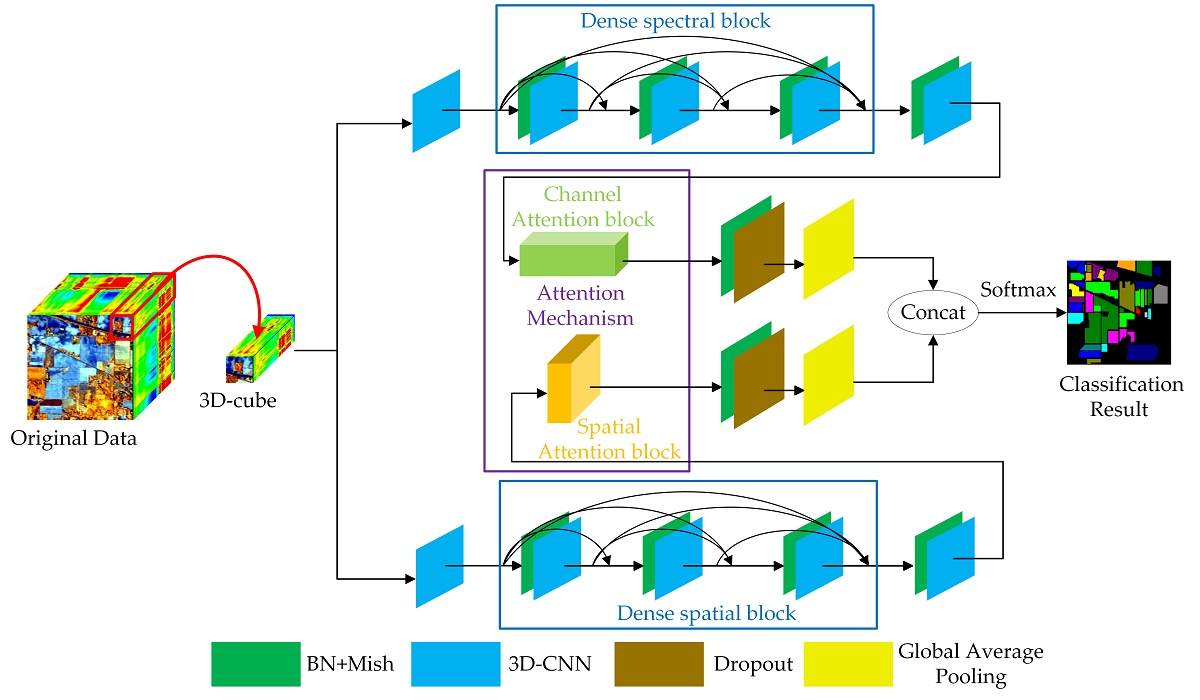In recent years, researchers have paid increasing attention on hyperspectral image (HSI) classification using deep learning methods. To improve the accuracy and reduce the training samples, we propose a double-branch dual-attention mechanism network (DBDA) for HSI classification in this paper. Two branches are designed in DBDA to capture plenty of spectral and spatial features contained in HSI. Furthermore, a channel attention block and a spatial attention block are applied to these two branches respectively, which enables DBDA to refine and optimize the extracted feature maps. A series of experiments on four hyperspectral datasets show that the proposed framework has superior performance to the state-of-the-art algorithm, especially when the training samples are signally lacking.

